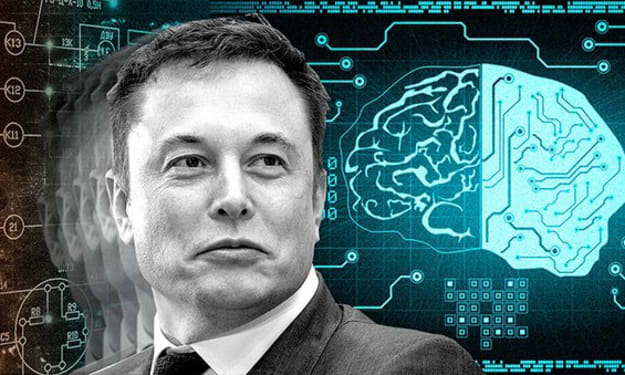Human Evolution: A Journey Through Time
Exploring the Origins and Development of Homo Sapiens**

Human Evolution: A Journey Through Time
Human evolution is a fascinating tale of transformation, adaptation, and survival. This epic journey, spanning millions of years, chronicles the emergence of Homo sapiens from our early primate ancestors. This essay delves into the key milestones, significant evolutionary traits, and the driving forces behind the evolution of modern humans.
Early Ancestors
The story of human evolution begins in Africa, often referred to as the cradle of humankind. The earliest known hominins, part of the human lineage, date back around 7 million years. Sahelanthropus tchadensis, one of the oldest known species, exhibits a blend of ape-like and human-like characteristics, such as a flat face and small canine teeth, suggesting bipedalism—a crucial evolutionary step.
Following Sahelanthropus, several other species contributed to the evolutionary lineage. Australopithecus afarensis, famously represented by the fossil "Lucy," lived around 3.9 to 2.9 million years ago. Lucy's bipedalism, as evidenced by her pelvis and leg bones, marks a significant evolutionary adaptation, allowing for greater mobility and the use of hands for tool-making.
The Genus Homo
The genus Homo, to which modern humans belong, emerged approximately 2.8 million years ago. Homo habilis, often dubbed "handy man," is one of the earliest known species. They showcased a larger brain and used primitive stone tools, indicating cognitive development. This technological leap provided a survival advantage, allowing early humans to hunt and process food more effectively.
Around 1.9 million years ago, Homo erectus appeared, displaying even greater advancements. Homo erectus had a more modern body structure, larger brain, and evidence suggests they used fire and more sophisticated tools. They were also the first hominins to venture out of Africa, spreading into Asia and Europe. This migration illustrates the adaptability and resilience of early humans in diverse environments.
Neanderthals and Modern Humans
Homo neanderthalensis, commonly known as Neanderthals, lived between 400,000 and 40,000 years ago. They were well-adapted to the cold climates of Europe and Western Asia, with robust bodies and large nasal cavities for warming cold air. Neanderthals created complex tools, controlled fire, and engaged in symbolic behavior, as evidenced by cave art and burial practices. Recent genetic studies reveal that Neanderthals interbred with modern humans, leaving a legacy in our DNA.
Homo sapiens, our direct ancestors, emerged around 300,000 years ago in Africa. Distinguished by a high forehead, rounded skull, and reduced brow ridges, Homo sapiens developed advanced tools, art, and language. The cognitive revolution, characterized by symbolic thought and sophisticated communication, set modern humans apart. This ability to share complex ideas and plan for the future facilitated cooperation and social cohesion, crucial for survival.
Driving Forces of Evolution
Several factors have driven human evolution, with natural selection playing a pivotal role. Environmental pressures, such as climate change, influenced the development of adaptive traits. For instance, bipedalism allowed early humans to traverse vast savannas, while increased brain size facilitated problem-solving and tool use.
Dietary changes also impacted evolution. The shift from a primarily plant-based diet to one that included more meat provided essential nutrients, promoting brain growth. Cooking, which made food easier to digest, further supported cognitive development.
Social structures and cultural evolution have also shaped human development. Cooperative hunting, sharing of resources, and division of labor improved survival rates. The development of language and symbolic thought enabled complex social interactions, fostering a sense of community and shared identity.
Modern Human Evolution
Human evolution did not cease with the advent of Homo sapiens. Modern humans continue to evolve, albeit at a different pace and through different mechanisms. Genetic mutations, gene flow between populations, and cultural advancements influence ongoing evolution. For instance, the ability to digest lactose in adulthood, a relatively recent adaptation, emerged in populations with a history of dairy farming.
Moreover, technological and medical advancements significantly impact modern human evolution. Developments in healthcare, for example, have altered selective pressures, allowing individuals with certain genetic conditions to survive and reproduce.
Conclusion
The journey of human evolution is a testament to the resilience and adaptability of our species. From early bipedal primates to technologically advanced Homo sapiens, each evolutionary milestone reflects a combination of environmental pressures, genetic mutations, and cultural innovations. As we look to the future, understanding our evolutionary past provides valuable insights into the complexities of human nature and our place in the natural world. The story of human evolution is far from over, continuing to unfold with each generation.
About the Creator
Enjoyed the story? Support the Creator.
Subscribe for free to receive all their stories in your feed. You could also pledge your support or give them a one-off tip, letting them know you appreciate their work.





Comments
There are no comments for this story
Be the first to respond and start the conversation.